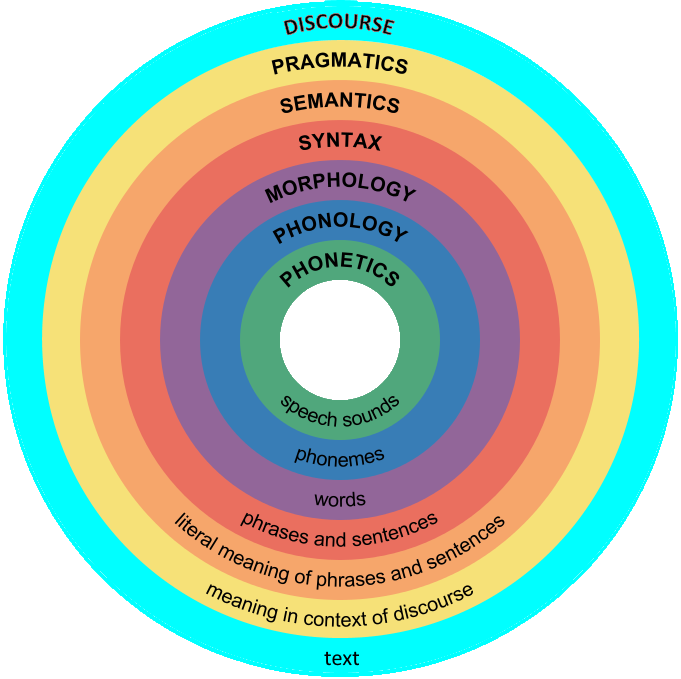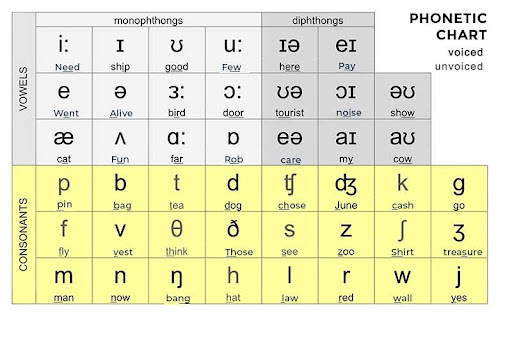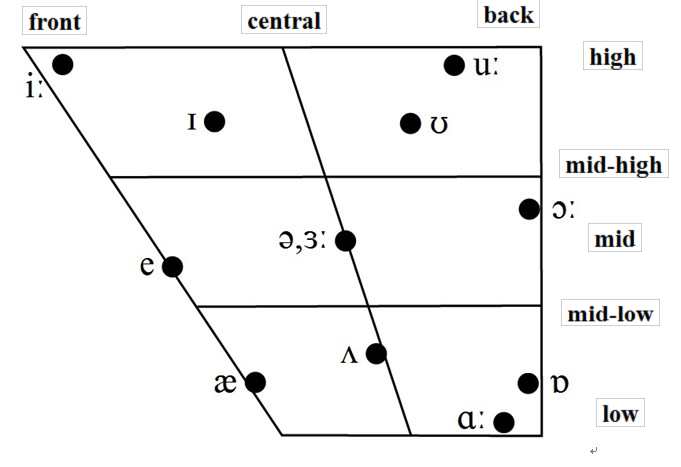Lingustics / Phonetics 2023/2024
Aperçu des sections
-
-
I. About the course (Informations sur le cours)
Lecture Class
Course Title: Linguistics & Phonetics
Credit hours: 3 hrs
Level: LMD 1 _G FILA (Finance Internationale et Langue Anglaise Appliquée)
Time: Wed, 8:30-11:30 a.m. (180 mins)
Location: R2Coefficient: 03
UE: Unité FondamentaleInstructor
Instructor: Dr Fatma KHERBACHE
Rank: Lecturer (Maitre de Conférences Classe A)
Office: Staff-Room 2. Department of English Language. Faculty of Letters and Foreign Languages.or FTPLTP Lab. The block of Laboratories
Consultation: Monday, 9 a.m. to 3 p.m.
Email: fatma.kherbache@univ-tlemcen.dz -
II. Course Objectives
The present lectures provide a detailed knowledge of the English sound system and its basic notions such as vowels and consonants with a description of the main organs responsible for speech production. The aims and objective of these lectures are to develop students’ knowledge and awareness of English phonetics, to understand how sounds are produced, how they are transmitted, and how they are perceived (Phonetics), and understand the system of sound and sound combinations in English (Phonology).
Upon completion of this course, the desired learning outcomes lie in the students’ ability to understand and produce English sounds clearly, read and produce phonemic transcriptions, and read the dictionary transcription correctly when checking a new word.
-
-
-
1. What is Linguistics?
-Definition
-The Scientific Criteria in Linguistic Research
2. Traditional Language Studies (TLS)
- Classical Grammar
-Medieval Grammar
- Pedagogical Grammar
- Comparative Philology
- Main Contributions of Traditional Grammar
3. Modern Linguistics (ML)
4. Approaches to Language and Linguistics
-Introduction
-Descriptive Linguistics
-Micro Linguistics and Macro Linguistics
5. What is Language?
-Introduction
- Linguistic Definitions of Language
- Dictionary Definitions of Language
-Features Common to All Languages
- Universal Properties of Language
6. De Saussure’s Theoretical Linguistic Concepts
- Introduction
- Langue and Parole
- Synchrony and Diachrony
- Linguistic Sign: Signifier and Signified
- Syntagmatic and Paradigmatic Relations
7. Chomsky's Competence and Performance
- Competence vs. Performance
-Language Acquisition Device (LAD) and Universal Grammar (UG)
-

-
-
-
Lecture 1: What is Linguistics?
1. Definition
The term linguistics refers to the “scientific study of language”. That is, it is based on the systematic (fixed and organized) investigation of a body of data within a coherent general theory of language structure. Its task is to discover and describe the nature underlying the language system.
2. The Scientific Criteria in Linguistic Research
Narrowly, the term “scientific” denotes the application of three basic criteria:
1. Empiricism: i.e. the language’s investigations should rely on observation and experiment.
2. Exactness: i.e. any linguistic theory should be correct in every detail, and valid in terms of time and place.
3. Objectivity: i.e. the linguist’s judgment should be impartial.
Exactness
Empiricism
Objectivity
P.M. Cook (Cited in Singh, 2006) states the scientific characteristics of research in the following quotation:
“Research is an honest, exhaustive, intelligent searching for fact and their meanings or implications with reference to a given problem. The product of findings of a given piece of research should be an authentic, verifiable, and contribution to knowledge in the field studied”.
Accordingly, linguistics is the science of language, and linguists are scientists who apply the scientific method to questions about the nature and function of language. In other words, they are researchers dedicated to the systematic study of language and concerned with observing facts about language, setting up hypotheses, testing their validity, and accepting or rejecting them. A linguist is generally concerned with how a language works not how it should work. The term ‘research’ consists of two words:
Research: Re+ search
‘Re’ means again and again and ‘search’ means to find out something. The following is the process:
Observes Collection of data
Person --------------------------> Phenomena ------------------------> Conclusions
Again and again Analysis of data
-
-
1. The Sounds of Language
- What is Phonetics?
-Articulatory Phonetics
-Acoustic Phonetics
- Auditory Phonetics
2. Production of Speech Sounds (Articulatory Phonetics)
- Articulators above the larynx
3. Vowels and Consonants
- How do vowels differ from consonants?
- How Do Vowels differ from Each Other?
- Cardinal Vowels
4. English Vowels
- Introduction
-Short Vowels
- Long Vowels
- Diphthongs
- Thriphthongs
5- How letters change the pronunciation
-
-
-
Lecture 2: Production of Speech Sounds (Articulatory Phonetics)
Figure 1 Speech Organs
Articulators above the larynx (see the diagram above)
The speech organs have other functions which are not connected with speech but they are biologically primary. The lungs are to supply Oxygen to the blood, the tongue and the teeth are for eating. However, speech sounds in all languages are produced as following: the air stream is expelled by the lungs, goes through the windpipe along the vocal tract which begins from the larynx to the lips (oral cavity) and nostrils (nasal cavity). Speech sounds are classified in terms of speech organs that produce them (the place of articulation) and the way in which they are produced (the manner of articulation).
Place: lips
Examples: /p/, /b/
Manner: plosive consonants
1- The pharynx: is a tube which begins just above the larynx. It is divided into two (2) parts at its top end: the back of mouth and the beginning of the way through the nasal cavity.
2- The Soft palate (velum): the velum is seen in the diagram in a position that allows air to pass through the nose and the mouth , but it may be seen in three (3) positions:
*lowered: to allow the air pass through both nose and mouth.
*lowered with a complete closure of the oral cavity: so that the air passes only through the nasal cavity.
*raised: so that the air escapes only from the mouth.
3-The hard palate: it is often called the roof of the mouth.
4-The alveolar ridge: it is between the top front teeth and the hard palate.
5- The tongue: it can be moved into many different places and different shapes. It is usually divided into five (5) parts. The figure below shows these parts:
Figure 2. Subdivisions of the Tongue
6- Teeth: the diagram shows only the upper and lower front teeth. The tongue is in contact with the upper teeth for many speech sounds.
7- Lips: (upper and lower) are important in speech. They can be pressed together to get bilabial /p/, /b/, brought into contact with teeth to get labio-dental /f/, /v/, or rounded to produce vowels like [u:] or spread to produce [i:].
8- Nasal cavity: is used for nasal sounds like /m/, /n/ where the air goes into the nasal cavity when the velum is completely lowered.
9- Larynx: is situated at the end of the windpipe. It is a very complex articulator with the vocal cords inside.
10- Vocal cords: they are very important for making the difference between voiced and voiceless sounds: if they are kept close together and made to vibrate as the air passes through the glottis(space between the vocal cords), he sound produced is voiced. If the air passes through without vibration, the sound is voiceless. All English vowels are voiced; consonants may be voiced or voiceless. In whispered speech, voiced consonants and vowels are voiceless.
-
-
8. Language as a Means of Communication
- Introduction
-Communication Process
9. Levels of Language Analysis: Phonetics and Phonology
- Introduction
-Phonetics
-Phonology
- Phonetics vs. Phonology
10. Morphology
-Basic Concepts and Terms
- Morphological Processes: a method to get new words
- Derivation
- Inflection
11. Syntax
-Definition
- Constituents
- Syntactic constructions
-Syntactic Functions
- Syntactic Categories-Lexical categories
- Syntactic Categories -Non-lexical categories
-Phrase
- Analysis of Sentence Structure
- Structural Ambiguities
- Types of sentences- clauses (syntactic constructions)
12. Semantics
-Definition
-Semantic Properties of Words
-
-
-
Examples of communication situations
Situation1
Situation 2
1-sender: doctor
1-sender: teacher
2-receiver: patient
2-receiver: students
3-channel: face to face
3-channel: face to face
4-message: spoken when the doctor explains the pathology to the patient/ and written when he prescribes the medical drugs relevant to the patient's disease
4-message: spoken when the teacher explains the lesson and written for the dictation
5-code: French, Arabic, English
5-code:French, Arabic, English
6-topic: topic discussion
6-topic: topic discussion
7-Social/physical context: private cabinet or hospital
7- Social/physical context: school or university
-
-
-
1. A General Description of the English Consonants
- Place of Articulation
-Manner of Articulation
- Voicing
2. Plosives
- Description of a plosive
- Place of Articulation of Plosives
3. The Phoneme
4. Phonetics vs. Phonology
5. Supra-Segmental Phonology
6. Fricatives
- Description
- Minimal Pairs
- The Sound - h-
7. Affricates
8. Nasals
- Description
9. Latetral
- Description
-Some Characteristics
10. Approximants
- Description
- Place of articulation
- The phoneme /r/
- The phonemes /w/, /j/
11. Conclusion
-

-
-
-
Place of articulation
Labio-dental
dental
alveolar
Palato-alveolar
glottal
Fortis (voiceless)
f
Ɵ
s
ʃ
h
Lenis (voiced)
v
ð
z
Ʒ
-
-
The English consonant phonemes
consonants
bilabial
Labio-dental
dental
alveolar
Palato-alveolar
palatal
velar
glottal
plosives
P, b
t, d
K, g
[Ɂ]*
fricatives
F, v
Ɵ, ð
s, z
ʃ, Ʒ
h
affricates
tʃ, dƷ
nasals
m
n
ŋ
lateral
l
approximants
w
r
j
* The glottal stop [Ɂ] only occurs as an onset to vowels, as in [(Ɂ) ǝʊld], or as an allophonic realisation of /p, t, k/ in certain phonetic contexts or certain dialects, e.g.,[ˋpʰɪɁtʃə] instead of [ˋpʰɪktʃə].
-
-
How many sound segments are there in each of the following words?
homophone:……………………..
equestrian: ……………………...
broach:…………………………..
writer:……………………………
thatched:…………………………
middle: …………………………
knack :…………………………...
photographer: …………………...
lesson:…………………………...
imagination :…………………….
-
Fill in the blank columns to describe the vowel symbols. An example is provided.
tongue height
front/back
lip position
ɪ
close
front
slightly spread
ə
Q
Ã
e
ʊ
-
On the diagram provided, various articulators are indicated by labelled arrows (a-e). Give the names for the articulators.
-
Write the phonetic symbols for the vowels in the following words:
a) bread b) rough c) foot d) hymn
e) pull f) cough g) mat h) friend
Write the phonetic symbol for each vowel.
Heard – been – root – heart – caught – all – beef – rude – urn – car – far
…………………………………………………………………………………….
leaving – speaker – fever – nurse – happy – half – between – beat – pull – luck
……………………………………………………………………………………
lock – course – sir – give – meet – hot – for – some – did – dove – are – number
……………………………………………………………………………………
-


